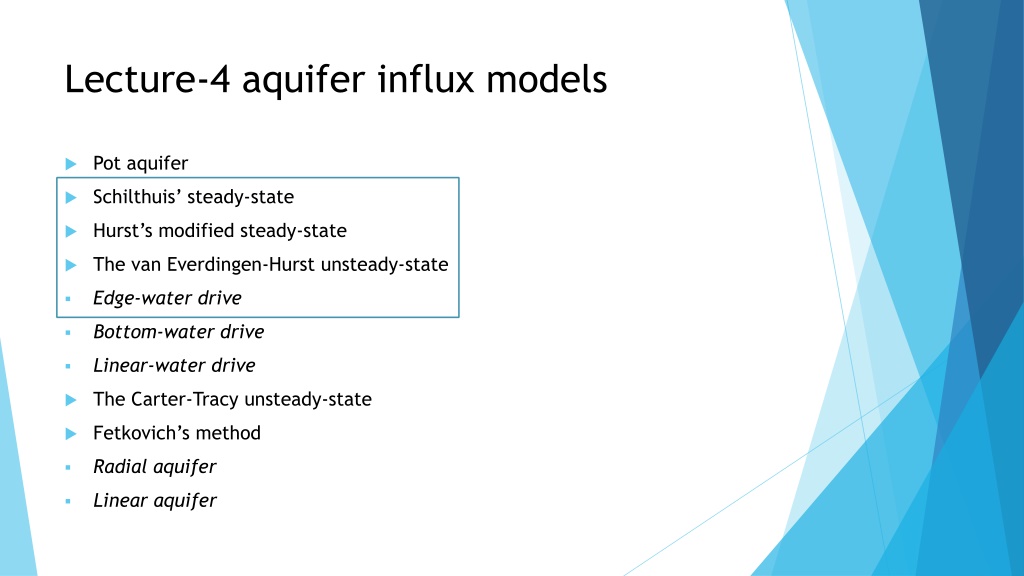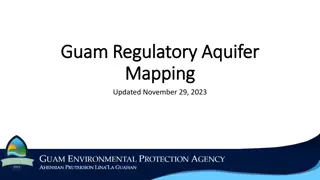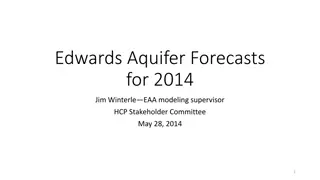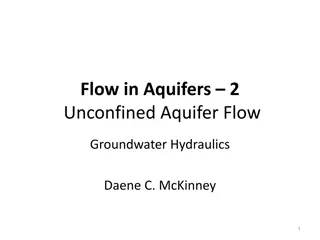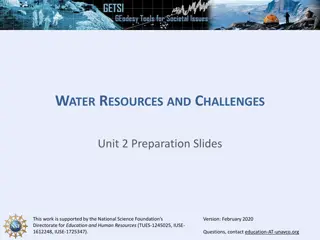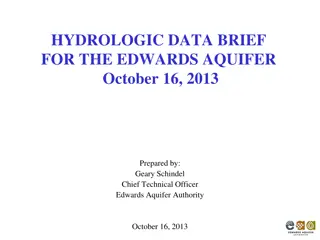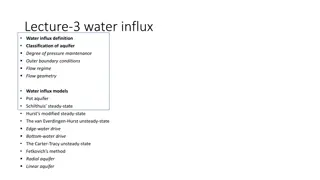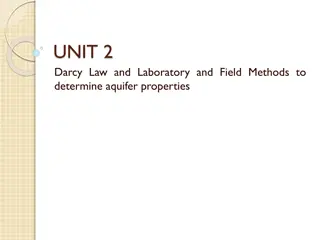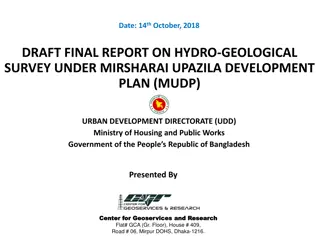Understanding Aquifer Influx Models and Solutions
Explore various aquifer influx models such as Schilthuis, Hurst's modified steady-state, and the van Everdingen-Hurst unsteady-state. Learn about the challenges with the Schilthuis model and how to determine unknown constants. Dive into solutions and examples to enhance your understanding.
Uploaded on Oct 01, 2024 | 0 Views
Download Presentation

Please find below an Image/Link to download the presentation.
The content on the website is provided AS IS for your information and personal use only. It may not be sold, licensed, or shared on other websites without obtaining consent from the author. Download presentation by click this link. If you encounter any issues during the download, it is possible that the publisher has removed the file from their server.
E N D
Presentation Transcript
Lecture-4 aquifer influx models Pot aquifer Schilthuis steady-state Hurst s modified steady-state The van Everdingen-Hurst unsteady-state Edge-water drive Bottom-water drive Linear-water drive The Carter-Tracy unsteady-state Fetkovich s method Radial aquifer Linear aquifer
Water influx models Hurst s modified steady-state model. The problem with the Schilthuis steady-state model is that the water is drained from the aquifer, the aquifer drainage radius ra will increase as the time increases. Hurst (1948) proposed that the aquifer radius ra will be a function of time. Dimensionless radius Schilthuis model will be
Solution Using any point at the straight line to find the constant a
The van Everdingen-Hurst unsteady-state Dimensionless diffusivity equation Van Everdingen-Hurst They solved diffusivity equation for Water influx by applying the laplace transformation
The constant terminal presssure at the initial and outer boundary condtions The Van Hurst assumed that the aquifer is characterized by:
Water does not encroach on all sides of the reservoir, or the reservoir is not circular in nature.
Use table 10-1 (Tarek Ahmed), take the average of WeD between two points of tD if the given tD is in between. What is wrong here ? Then calculate the cumulative water influx by:
See you next time inshallah HAVE A NICE TIME
